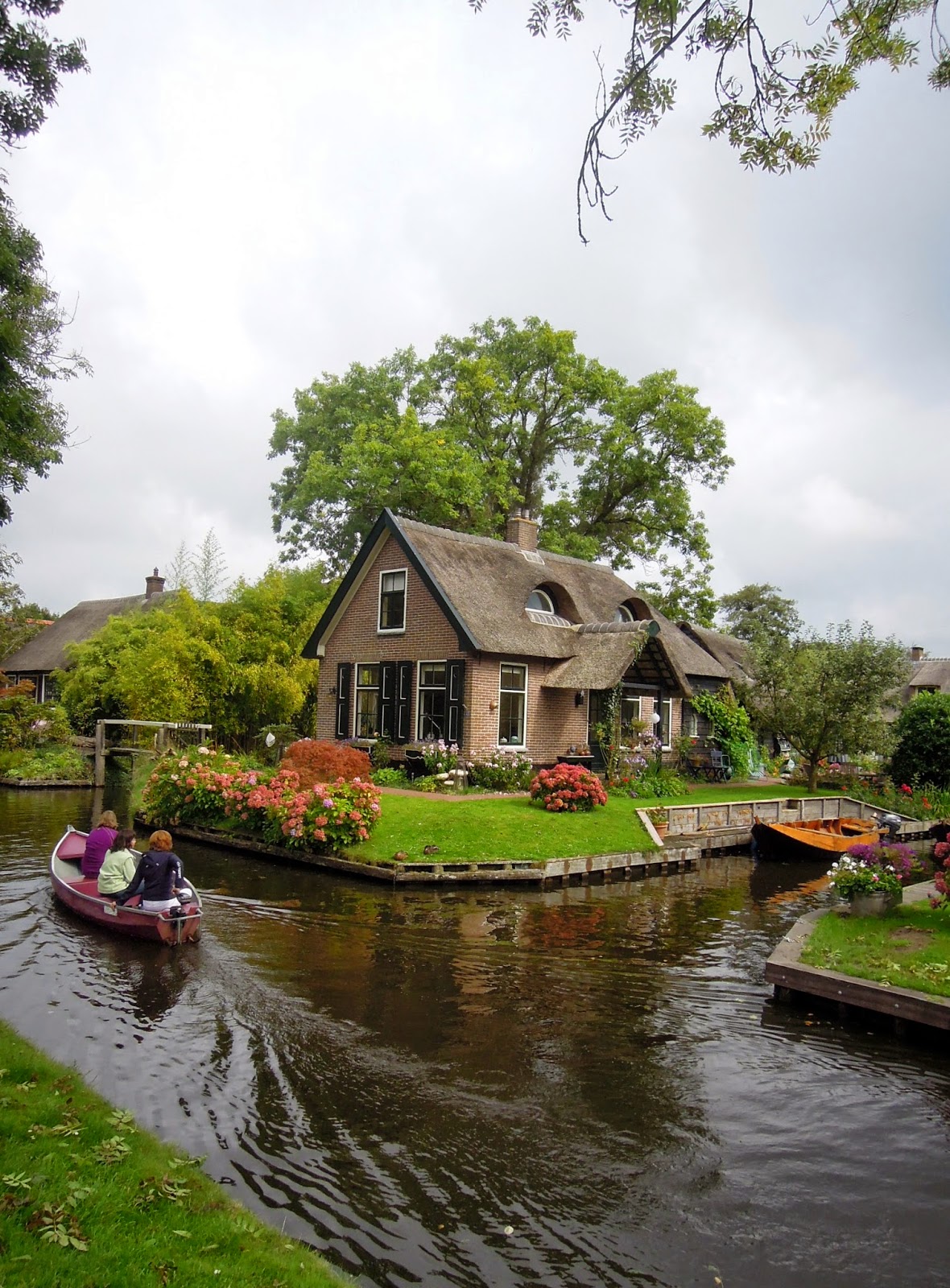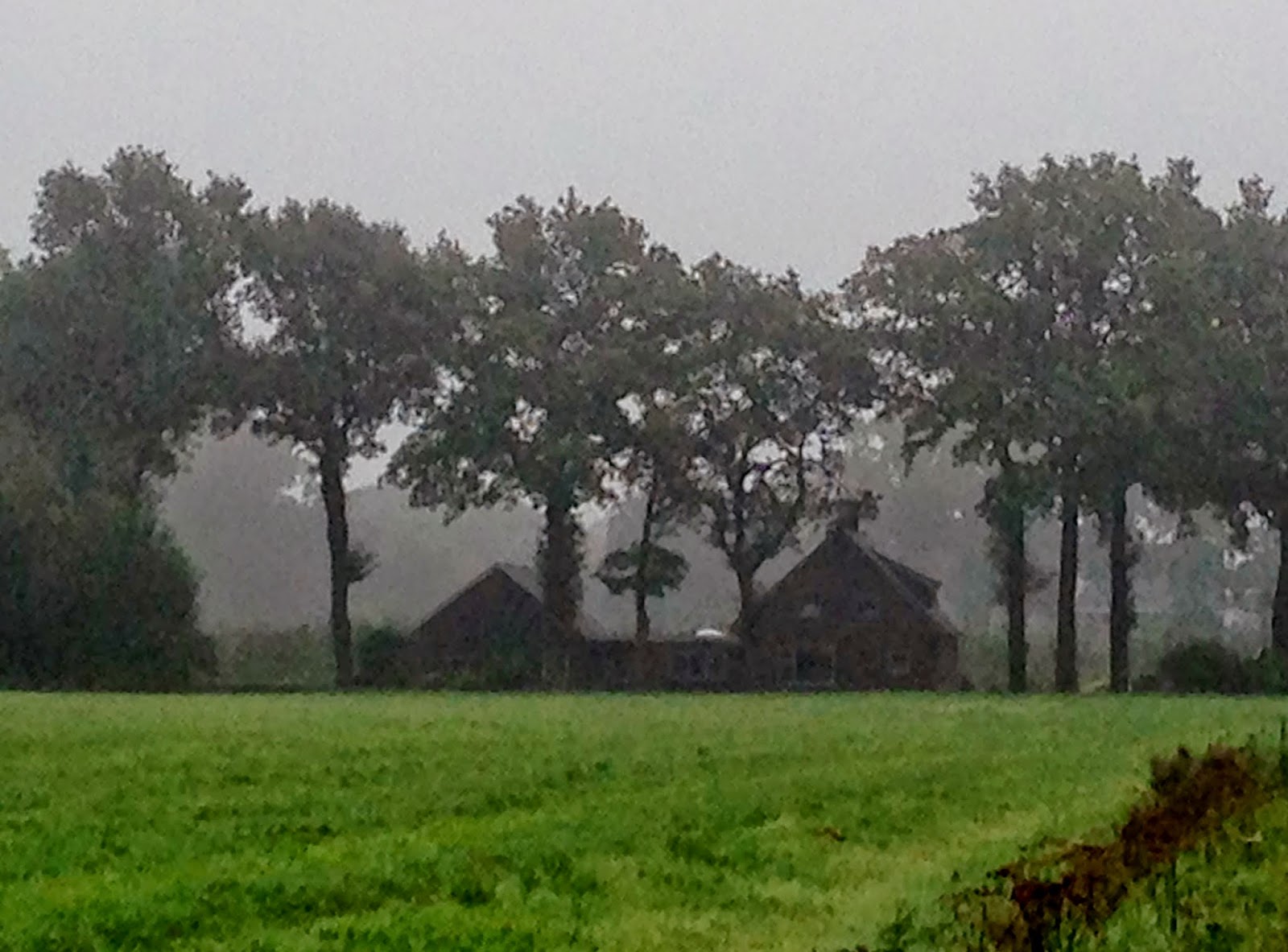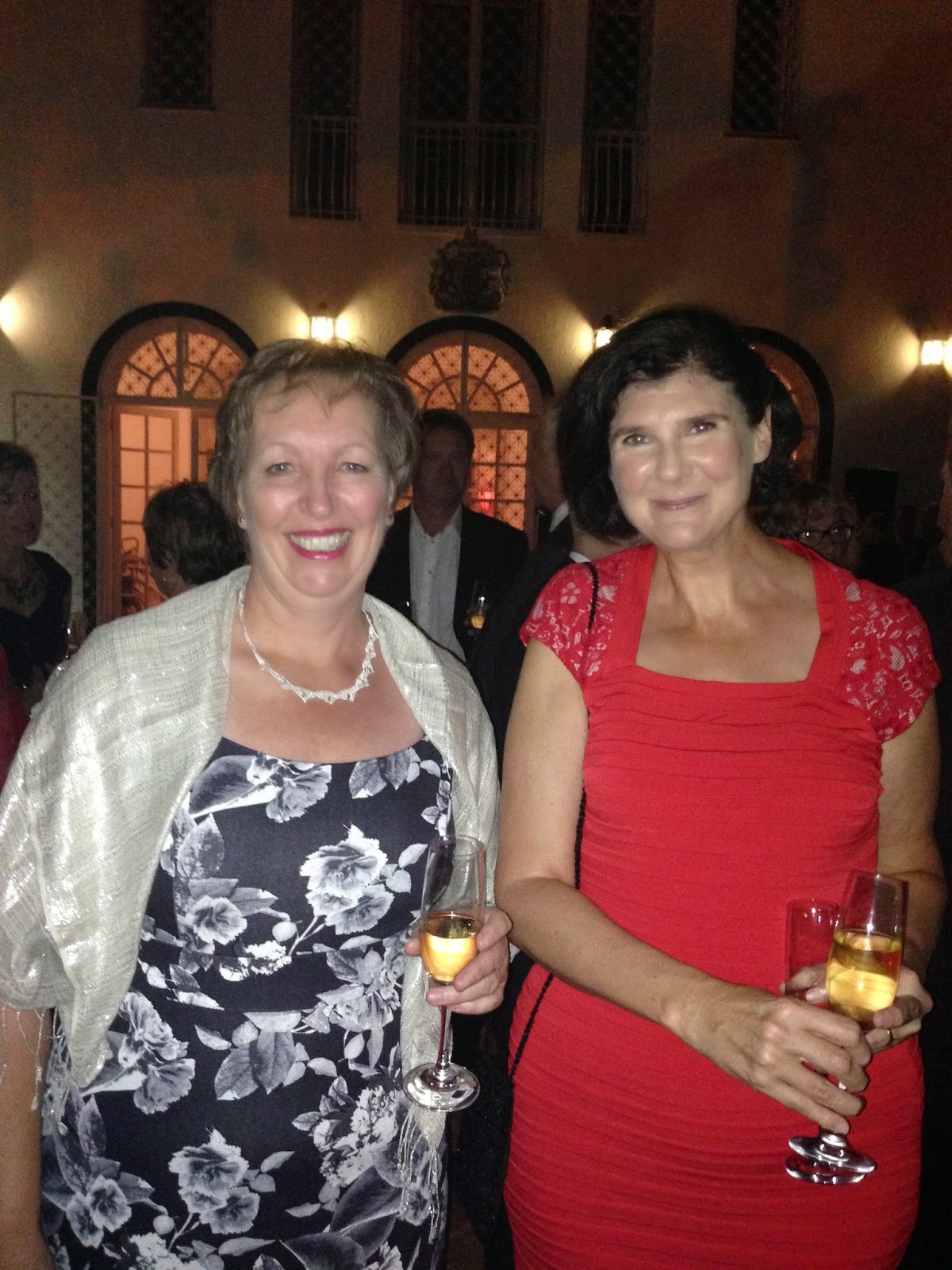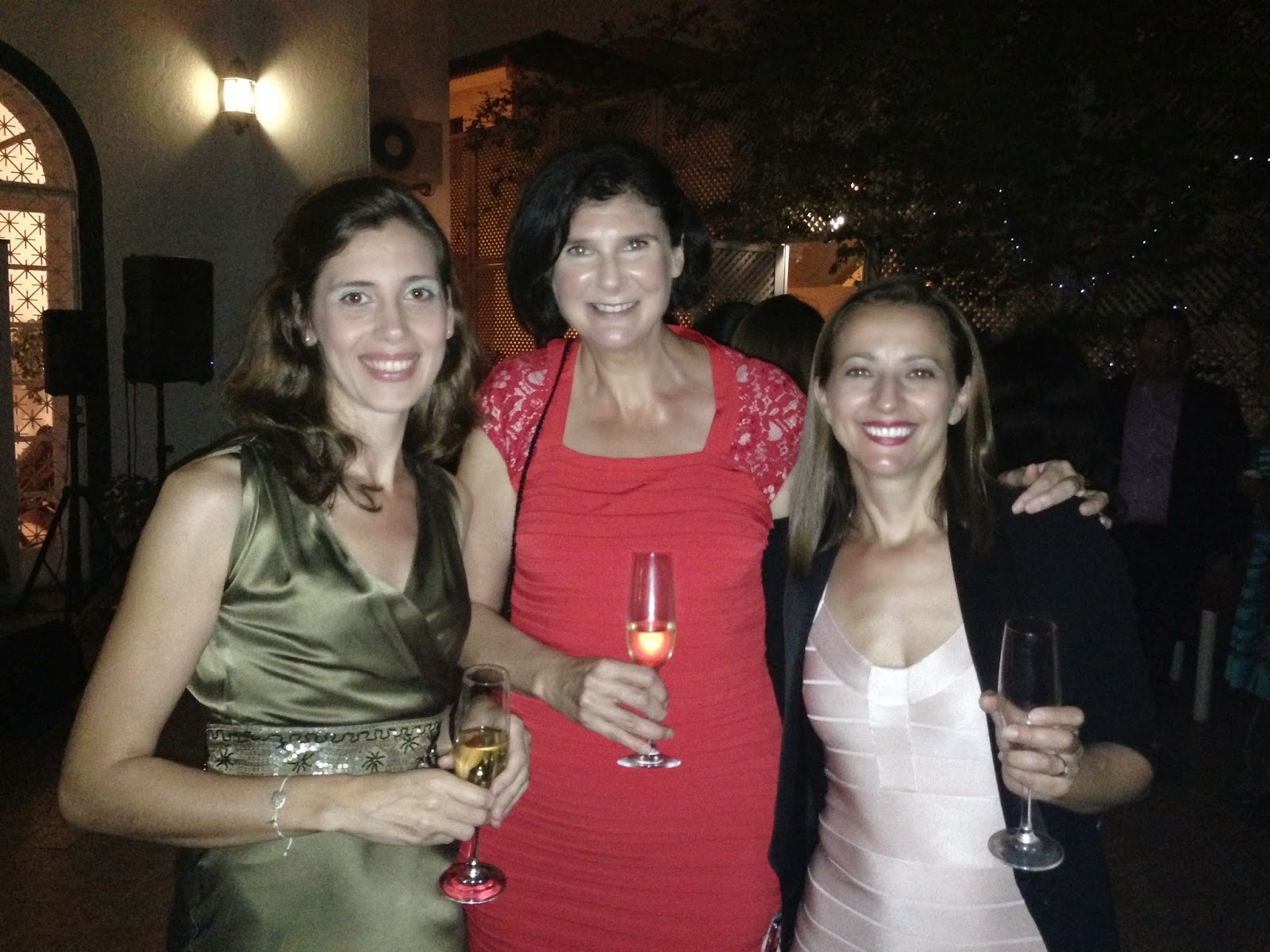September 16, Happy Birthday Dad!
One photo to start with. This was us after me proving what a rotten sailor I am first attempt where we just spun around and around on the lake.
With 3 weeks in Holland we took the opportunity this time to travel a little first to the North of Holland, an area known as Friesland and then to the South region, Limburg, where Pap is from.
 |
She ain't no Captain Sparrow
|
At the end of August we travelled via Dubai to Holland. As you do (ie double the flight time). We decided to use up some airpoints before they expired.
After the usual time catching up with family, riding bikes, shopping for Dutch goodies Jeroen and I took a trip with Pap and Mam up to Giethoorn.
Giethoorn is a small water village commonly known as 'Dutch Venice'. It was a very tranquil area and we enjoyed taking an outing on a whisper boat on the canals and around onto the lake. (pic above). Giethoorn is at the centre of the Province of Overijssel's canal system. Indeed, the little village is so dependent on its waterways, many of the houses cannot be reached by road. When the postie delivers the mail he travels by punt.
 |
| Typical reed roof |
 |
| Jeroen and Albert Mol, and famous Dutch actor. |
 |
| Quaint houses on the canal ways |
 |
| Wait for me Mum! |
 |
| This is the Giethoorn fire service vehicle... |
 |
| Who's wobbling the boat? Jeroen of course. |
 |
| Pap and son on the water |
 |
| Off we go! |
 |
| Autumn's coming |
 |
| A windmill-less mill |
Next we travelled on to the fishing village of Makkum and then the town of Sneek (pronounced Snake).
 |
| Sneek Watergate, C. 1613 |
 |
| Step gable-type architecture |
 |
| Bell-gable type architecture |
 |
| Boat passing through the sluice Makkum |
 |
| Off she goes |
 |
| More beautiful buildings |
In the last week in Holland we travelled to the South of Holland via Germany. Ahem, just a small detour.
Limburg is the southern most province of Holland bordering Germany and Belgium. South Limburg has a hilly landscape, with sunken lanes and an abundance of castles and the regional language of Limburgish is spoken alongside Dutch.
The region also contains the highest point above sea leavel in mainland Holland, the Vaalserberg which is 322.5 metres above sea level (half height of the Kaitakes for my Naki followers).
For centuries, the strategic location of the current province made it a much-coveted region among Europe's major powers. Romans, Habsburg Spaniards, Prussians, Habsburg Austrians and French have all ruled Limburg.
The capital city, Maastricht, is where we spent some time also the little village of Slenaken.
 |
| Typical old Maastricht street in the city centre |
 |
| Lunchtime entertainment |
A highlight was to visit the Dominican church, circa 13th century, which now is home to one of the world's most beautiful book stores. Impressive!
 |
| Bookstore inside old Dominican church |
 |
| A popular place to visit, buy books or enjoy a coffee |
 |
| Reflection time...this place was incredibly dark in the congregation area. |
 |
| Parts of the old wall are evident throughout the city |
 |
| Feilzusterklooster, a small convent built in the 14th century - rebuilt in the 17th century after a huge fire |
The Helpoort (Gate of Hell) was built in 1229 and is the oldest of the remaining gates in the Netherlands. It is part of the first walls that fortified the city.
 |
| Helport |
 |
| Not going through then? |
 |
| Not going anywhere, fast |
 |
| We stopped at the only mountain-house in Holland for lunch. Gezellig! |
Next we visited the Netherlands American Military Cemetery near Maastricht. The cemetery site has a rich historical background, lying near the famous Cologne-Boulogne highway, originally built by the Romans and used by Julius Casaer during his campaign in that area. The highway was also used by Napoleon, and Kaiser Wilhelm II. In May 1940, Hitler's legions advanced over the route of the old Roman highway, overwhelming the Low Countries. In September 1944, German troops once more used the highway for the withdrawal from the countries occupied for four years.
The cemetery is home to almost 10,000 American soldiers who died during battle, most nearby. Over 1700 soldiers listed as missing are commemorated here in unknown graves.
 |
| A solemn place |
 |
| An unknown soldier |
 |
| The sun goes down and we remember them |
 |
| Looking back onto the entrance courtyard |
And finally a little story. When we visited up north we walked around a little country hamlet and Pap and I came upon a small cemetery. As I observed the names on many of the grave-stones I noted many were marked with the same family name. My heart sank wondering what could have devastated such a large family on different dates and so many with different ages. A bit sad, I checked with Pap what he thought may have caused this catastrophe. As we again approached the stones he asked 'What is the family name on the graves?' he asked. 'Rustplaats', I answered. And with a laugh he explained that Rustplaats is not a family name but an inscription, literally meaning 'rest place'.
RIP Family Rustplaats.
 |
| The Rest Place of almost 10,000 American soldiers |
One of the activities we enjoy in Holland is to eat Salted Herring. And it must be eaten like so...
 |
| Down the hatch, raw onions on salted herring |
 |
| No drama for the boys! |
 |
| Farmland near Pap and Mam's |
 |
| Misty morning |
September 20 we are heading out for a charity evening run by the Luanda British Women's Association. It is held at the British Embassy. The evening is held outside on the terrace with a balmy 22 degrees.
 |
| Ready to go to the British Embassy |
 |
| Mandy and I, the tall girls |
 |
| Good friends, Filipa (Portuguese teacher) and Ilenia |
September 28, home alone as Jeroen has gone offshore for the first time in two years. So, I went and took Ilenia's cat (Alfredo) for the week while they go on holiday.
Today a nice walk with Filipa on the Marginal...it's warming up again so a lovely swim in the afternoon with Jaa.
 |
| Alfredo curling his nails in to his favourite blanket |
 |
| Off shopping |

















































No comments:
Post a Comment